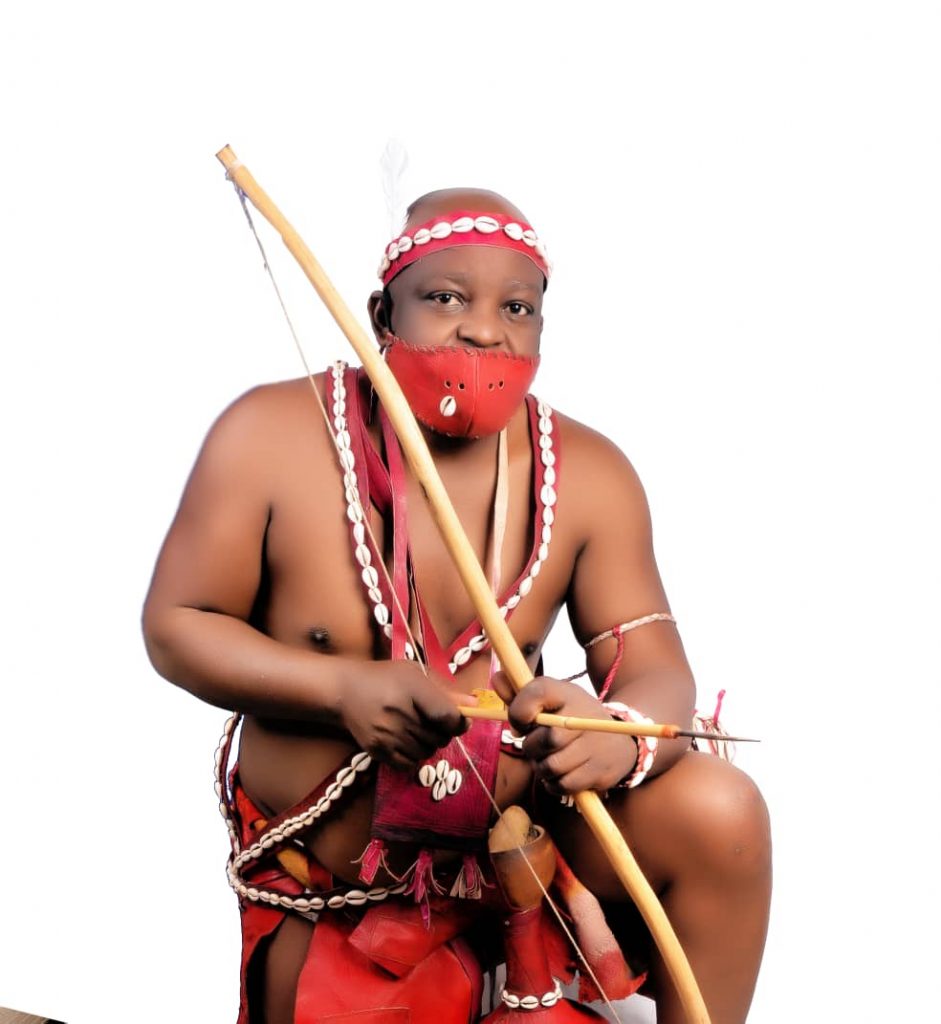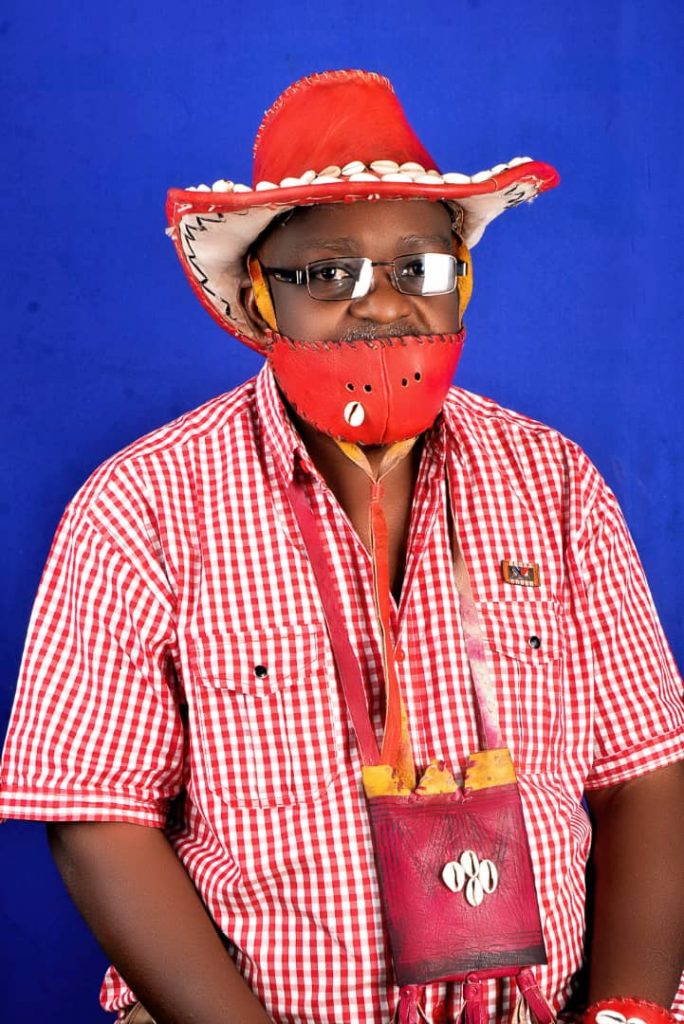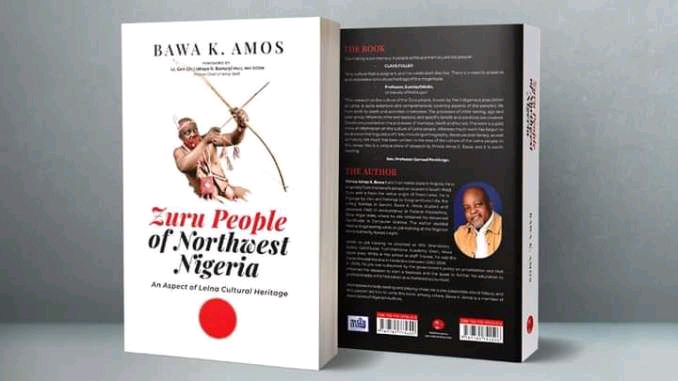Prince Bawa K. Amos a Nigerian author, presents a collection of the socio-cultural practices of the indigenous people of Zuru land in his book, “Zuru People of North-West Nigeria (Kebbi state): An Aspect of Lelna Cultural Heritage”.

The book is a harvest of information about the rich culture of an ethnic nationality whose traditional values, like those of many other ancient societies, are gradually going extinct.
Published in 2019 by Wadmaryamu Services Enterprises, the book contains 344 pages of lucid prose, divided into18 chapters and subsumed in five broad parts, revolving around the socio-cultural milieus of Lelna. The story, presented in the first-person point of view, typical of autobiographies, focuses on group identity.
It portrays the people in their traditional setting as a warrior tribe whose main occupation is farming and hunting with blacksmithing as a prestige trade.

The author takes the reader on an explorative journey as he unveils select aspects of Lelna culture, infusing his personal experiences into the collective experience of his ethnic group. The book encapsulates non-fictionalized, but captivating accounts of the development of man in A’lela and copious lessons on the C’lela language. Enriched with folklores that celebrate commendable deeds, but denounce deviant behaviours and punish offenders, the seminal masterpiece makes an interesting read.
Each part features subtitled chapters anchored on diverse subject matters. In Part One, the author introduces the reader to the history and language of the Lelna people. He explains why people are called Zuru or Dakarkari instead of Lelna. The topics in this part that revolve around childbirth include: A Pregnant Woman, Signs of Labour, Announcing a Delivery, Observing a Woman after Delivery, and Child Dedication.
Part Two encompasses topics such as Growth Period of Lelna Boys and Girls, Lelna Religious Cult (M’gila), and Traditional Court Process. Marriage related themes embedded in socio-cultural and economic activities are portrayed in Part Three under the subtitles: Loaning a Wife, Bridal Wealth, U’hola Festival, Economic Benefits of Shea Butter Oil, tribal marks and Chiselling of teeth.
Part Four “When Someone Dies” echoes the people’s belief about death: “When somebody dies, custom demands that there will be an inquest to ascertain what killed the man or woman. The inquest happens via consultation with an oracle.
The chief priest (Gomva d’sako) helps take care of that.” The author describes the customary activities observed before, during after the burial of a king, succession to the throne, and the handling of other burials in the society.
Part Five focuses on the relationship between Lelna and the other tribes with emphasis on the intertribal mergers resulting from the intermingling of the 33 tribes and over 300 clans living in A’lela. This segment also provides insightful commentaries on dialectal variations, the grammar, and phonology of the C’kela language. Beginning from the preface, the author reminisces on how childhood curiosity motivated him into writing about Lelna cultural heritage: “As a curious child, I used to ask a lot of questions about our culture and tradition. When I could not get information anywhere, I usually asked my grandfather Daudu K. Bawa, his wife Kukube, and my parents. My inquiries mostly involved seeking answers on why the Lelna people were a certain way.” He admits that the answers to such questions became the springboard for the present work: He showcases the various stages of “Rite of Passage for a K’lela man” from birth through death, admitting that some of the socio-cultural practices have undergone emasculation. The following passage excerpted from the “Conclusion” portrays his clarion call for the emancipation of the people from cultural alienation and reflects the theme of an identity crisis: “The Lelna people are fast exchanging their language, dialect and cultural values for Hausa and English. Due to this confusing trend, I grew interested in learning about Hausa people. By gathering information from different sources, I would say that a Hausa man is a tribesman who has lost his native or cultural identity.
If you pick out fifty men whom you assume are Hausa and interview them, you would discover that they are tribesmen from Lelna, Kamberi, Baribari, Kamuku, Saare, Hunne Yannne, Dakun, Adara, Abagi, or Bachama.” Gender disparity is one of the cardinal issues depicted in the book. This assertion is instantiated in the following excerpt: “If a woman dies in A’lela culture, a daughter or female children of the deceased only have the right to their mother’s personal effects.
These females, however, do not get any part of their mother’s property, and this happens because she will eventually be married and blessed with children.” Moreover, the role of mothers in preparing their daughters for marriage is highlighted with emphasis on sex education: “Mothers are required to give their daughters sex education. “By Lelna customs, it is a taboo for a woman to lose her virginity before marriage. It amounts to sacrilege, and if this happens, she will be mocked by her age group and parents. Such girls are usually screened out during a virginity screening ceremony in D’bitti, the ninth month of Lelna calendar, and will not be presented as virgins to their suitors during U’hola festival.” The author recalls experiencing a culture shock when he was to receive a tribal mark on his maiden visit to the village: “One day, while we were sitting under a tree, a stranger came to visit our grandparents. “Little did we know that our grandparents had decided to give us tribal marks. Our sister was called aside and the next thing we saw was blood running down her cheeks. The rest of us took to our heels and ran into the bush. We returned at sunset when we were sure that the stranger had gone. That was how we, the boys, escaped getting tribal marks.”
Widowhood is another thematic concern depicted in the book. The author reveals that during the mourning period the widow is confined to her room for three months or as long as one year, depending on her age and within the period, she wears leaves on her waist together with a thin rope tied around her waist, adding: “In 1979, a woman called Muni visited my grandparents’ compound. That was the time I saw a woman dressed in leaves. She was holding a stick and a calabash. I asked my uncle who this was and why she was dressed that way? He replied that she was a ‘bomse,’ ‘Bombshell?’ I asked, trying to pronounce what I thought I heard, but my uncle gave me a warm smile. ‘No, boy I said bomse…Bomse is a woman whose husband is dead.”
On the people’s religious stance, the author explains that Lelna people believe in the existence of a supreme spiritual God, Asila who is represented by the spirits of the ancestor, Aknu. They also believe in reincarnation, life after death and that earthly life is transient as physical death precedes eternal judgment. He reveals that the Lelna have a traditional religious cult, “M’ gila” which serves as an institution through which young boys are initiated and groomed from their teens into responsible adults.
He adds that the adherents of M’gila are conservative traditionalists, who accept neither Christianity nor Islam. The author also presents some myths and superstitious beliefs as exemplified in: “Women and children don’t eat chicken and eggs because chickens are used during their dedication rituals. Besides, it is also believed that children who eat chickens could turn out greedy.” Some of the traditional practices are similar to those recorded in the Bible. For instance, Golmo resonates with the account of Jacob who served his father-in-law, Laban for seven years in order to marry Rachel.
According to the author, Golmo which doubles as a military training institution for Lelna young men is a marriage contract that mandates a prospective son-in-law to serve the father-in-law on the farm for seven years. Surrogate or Ghost Marriage on the other hand allows the younger brother of a man to marry the widow and raise children for the late husband, reflecting the belief that marriage continues in the next life where the woman will belong to her first husband.
The book has been endorsed by renowned scholars as an invaluable resource material for research. In the foreword, a former Chief of Army Staff, Lt General Ishaya Bamaiyi recommends it saying: “This book should be read by those who associate with the Lelna people and would like to learn more about them. As for us Lelna people, I would like to say that reading this book will, not only enable us to know our culture, it will also enable us to know those around us who have the same or similar traditions and cultures. We will also be educated on the relationship between people in Zuru land as well as where these relationships started and the reason we should remain one despite the difference in dialects.”















Amazing
Keep elevating….
Sir